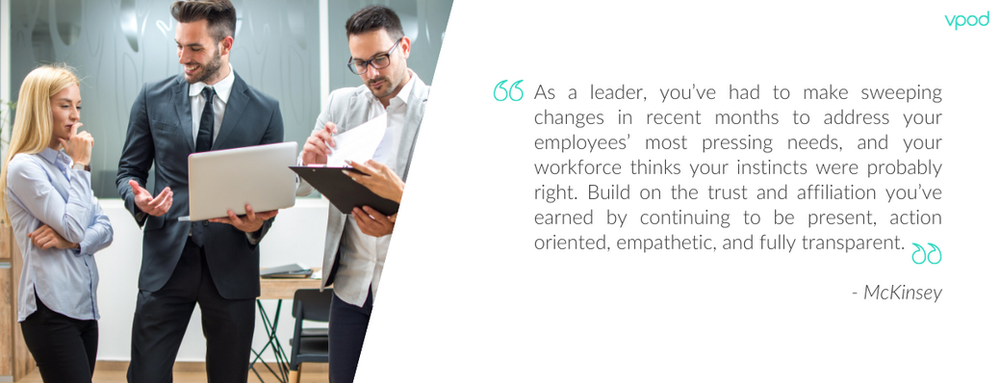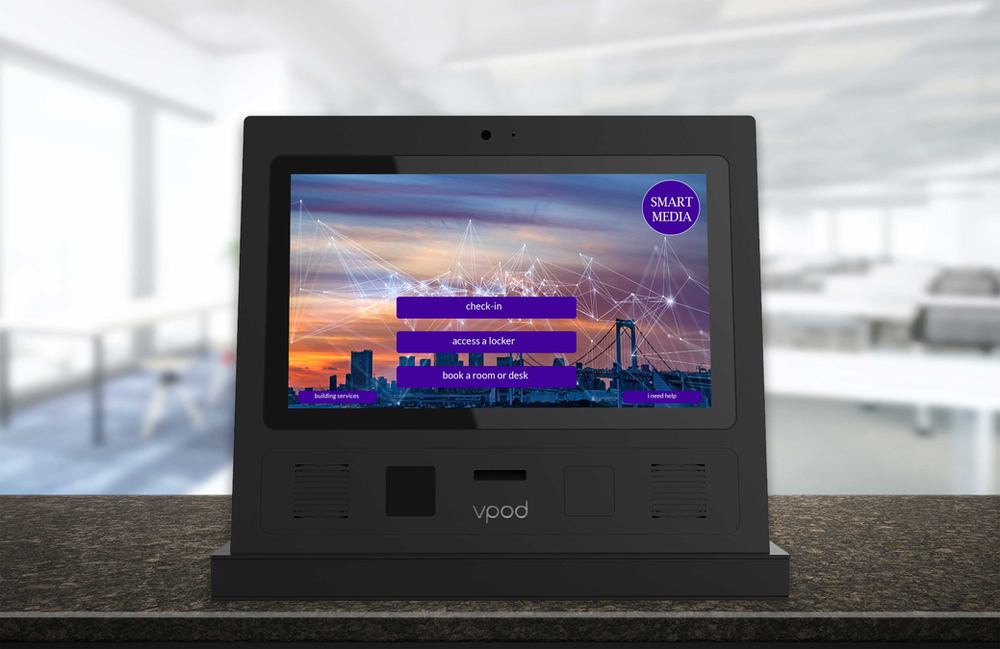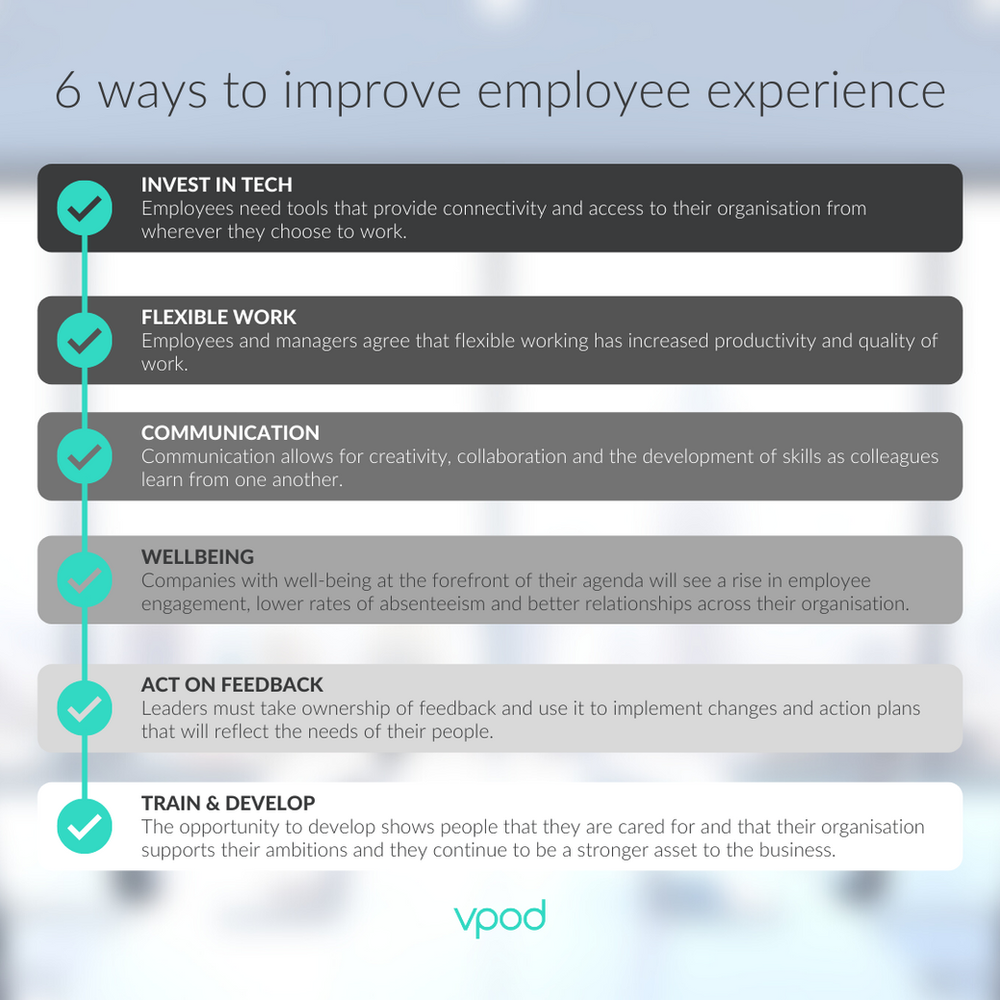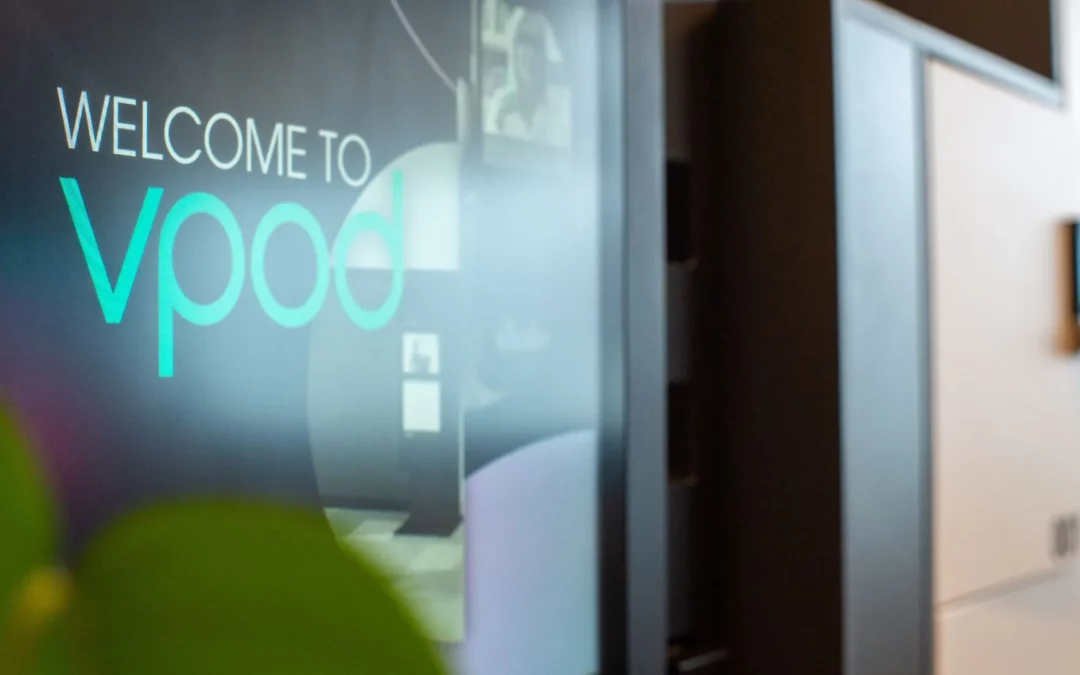In our last blog, we explored why the employee experience matters now more than ever. With increasing levels of job dissatisfaction across industries and organisations, leaders are carefully considering the changes and investments they need to make to improve the workplace for their employees.
Improving the employee experience is essential for businesses that are concerned about losing their talent and attracting new talent. With over 41% of employees considering a career/company change and with pay packages not being enough to attract new employees – organisations are having to re-evaluate their identity from the inside and through the people who make the business work from day to day.
Today we’ll discuss 6 ways to improve the employee experience.

1. Invest in the right technology

Employees need the right tools to do their job. Leaders need a deep understanding of how their people use technology in their roles and how those tools carry out their daily tasks. With a move towards hybrid working, employees need tools that provide connectivity and access to their organisation from wherever they choose to work. The right smart workplace technology equates to great performance.
“When you don’t have a clear and accurate understanding of how your people use technology in their jobs, and what they need and want from those tools, their overall experience at work can suffer. A subpar employee experience can have a ripple effect across the organization, shaping everything from how engaged people are to their enthusiasm for delivering a superior customer service.” – ,PWC
2. Flexible working works

The world has changed forever. With most people being forced to work from home due to the restrictions of the Covid-19 pandemic, the concept of flexible working has emerged naturally and out of necessity.
People have proved that productivity can happen anywhere without disrupting the ability to get through a workload. In fact, both employees and managers agree that flexible working has increased individual productivity and quality of work.
According to CIPD: “Flexibility helps more people access the labour market and stay in work, manage caring responsibilities and work-life balance, and supports enhanced employee engagement and wellbeing.”
3. Build a strong community through communication

The pandemic has brought colleagues together as remote working blended personal and work life. For the past year, colleagues have virtually spent time in one another’s home, meeting pets, partners and according to the trends of the smart workplace from Microsoft’s Annual Index Report – 17% of colleagues even shared tears together during the dark days of the pandemic.
The closeness of colleagues has meant that employees have become engaged on a personal level and not just a business level. This allows for more creativity, more collaboration and the development of skills as colleagues learn from one another.
People are more productive when they work for organisations with which they can identify… An employee who understands where they fit into the equation, the value they bring to the organisation and the part they play in achieving the big picture is more likely to not only go above and beyond, but also help others achieve their maximum potential too.
4. Make wellness a priority

Employee well-being in the workplace has always been necessary, however, research shows that it isn’t always a priority and many organisations do not have a well-being strategy in place. Well-being and mental health are critical, especially since the coronavirus pandemic has had a serious impact on so many. Companies with well-being at the forefront of their agenda will see a rise in employee engagement, lower rates of absenteeism and better relationships across their organisation.
A well-being strategy is a more holistic approach than a one-off initiative. According to CIPD, in order to maximise well-being across a business, “good work” must be provided. They define ‘good work’ as:
“…work that is fairly rewarded, providing people with the means to securely make a living; it gives opportunities to develop skills and a career, and ideally provides a sense of fulfilment. Organisations also need to focus on the wider dimensions of wellbeing, including financial wellbeing, which is still a neglected area.”
5. Value employee feedback and act on it

Organisations often send out anonymous surveys to collect employee feedback on a range of matters. However, they don’t always act on the feedback. Failing to communicate findings and make improvements based on the data is detrimental to the relationship between the employee and the organisation.
Qualtrics outlines 3 potential issues that arise out of ignored employee surveys:
- Employees become sceptical of organisational surveys because they start to believe they are only driving the organization’s agenda
- Employees are unwilling to risk providing candid and honest employee feedback (which is what organisations really need)
- Employees become unwilling to respond to surveys in general and survey programs slowly die over time”
Ultimately, surveys are a way of understanding your organisation from the inside out, from the perspective of the people who make it work daily. Leaders must take ownership of the data and use it to implement changes and action plans that will reflect the needs of their people.
6. Offer your people the chance to train, develop, and progress
Learning and Development are critical to the employee experience. It requires an organisation to understand the career goals and aspirations their people have set for themselves and set a growth plan to help them achieve them. It also requires investment and ensuring that employees have the knowledge and skills to meet the demands of their job and are continually learning to grow according to the plans they’ve set out.
Peakon writes: When you invest in your employees, you’re investing in the people that they want to become, not just a future business asset. This genuine concern for their personal and professional development will pay dividends in the form of loyalty and commitment on the job.
Offering your people the opportunity to train, develop and progress shows them that they are cared for and that their organisation supports their ambitions. It ensures not only that people feel valued but that they’ll continue to become a stronger asset to the business and will be ready to adapt to any changes that come their way.

Conclusion
With the 6 steps approach in mind, organisations have seen improved employee wellness and experience by adopting smart locker technology into their workplace. Vpod is committed to supporting businesses to create a modern workplace that works for your people with our unique smart locker systems.
As we move forward into the ‘new normal’ what plans does your organisation have to improve the employee experience for its people? Read our recent blog about strategising your employee experience with smart workplace technology


